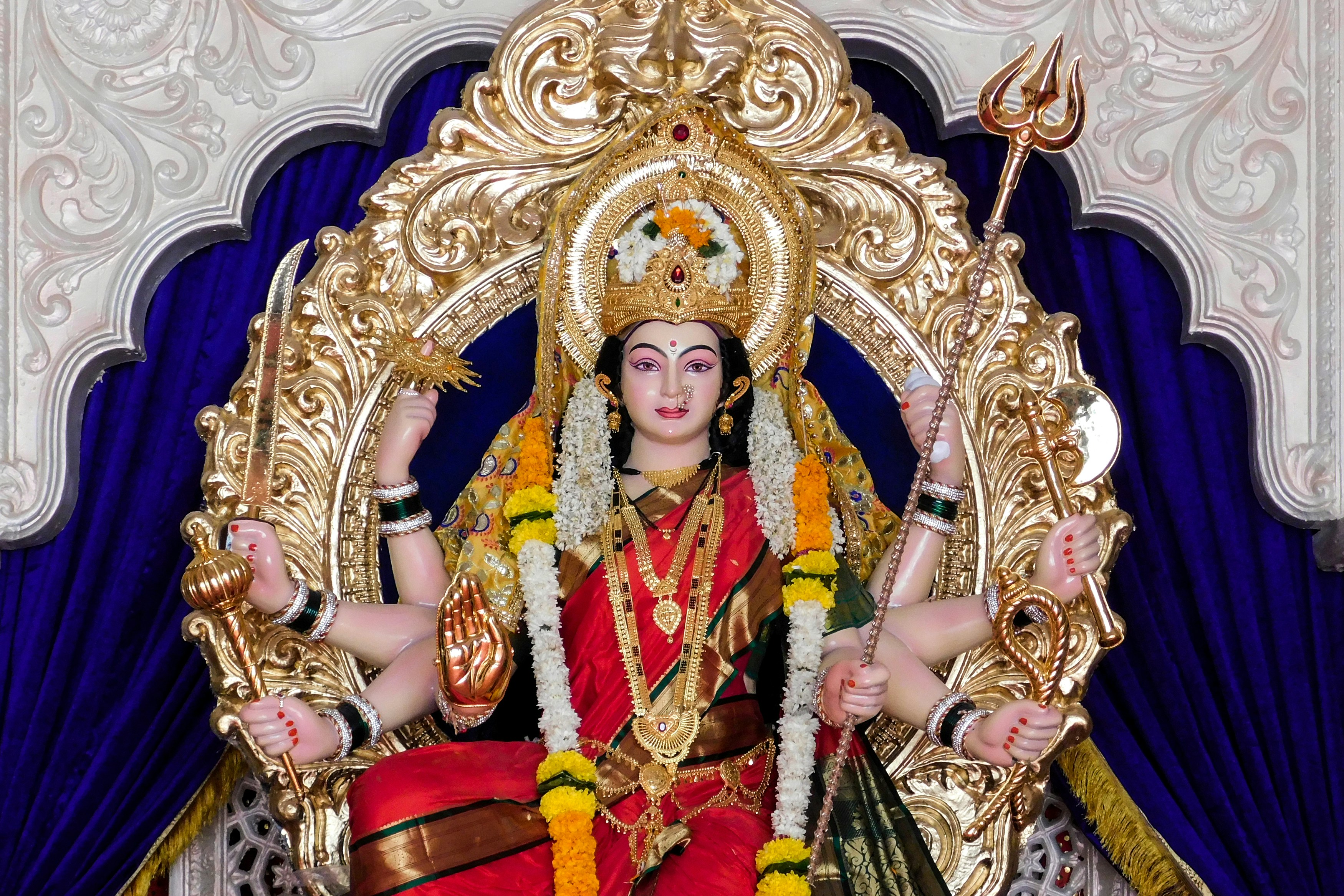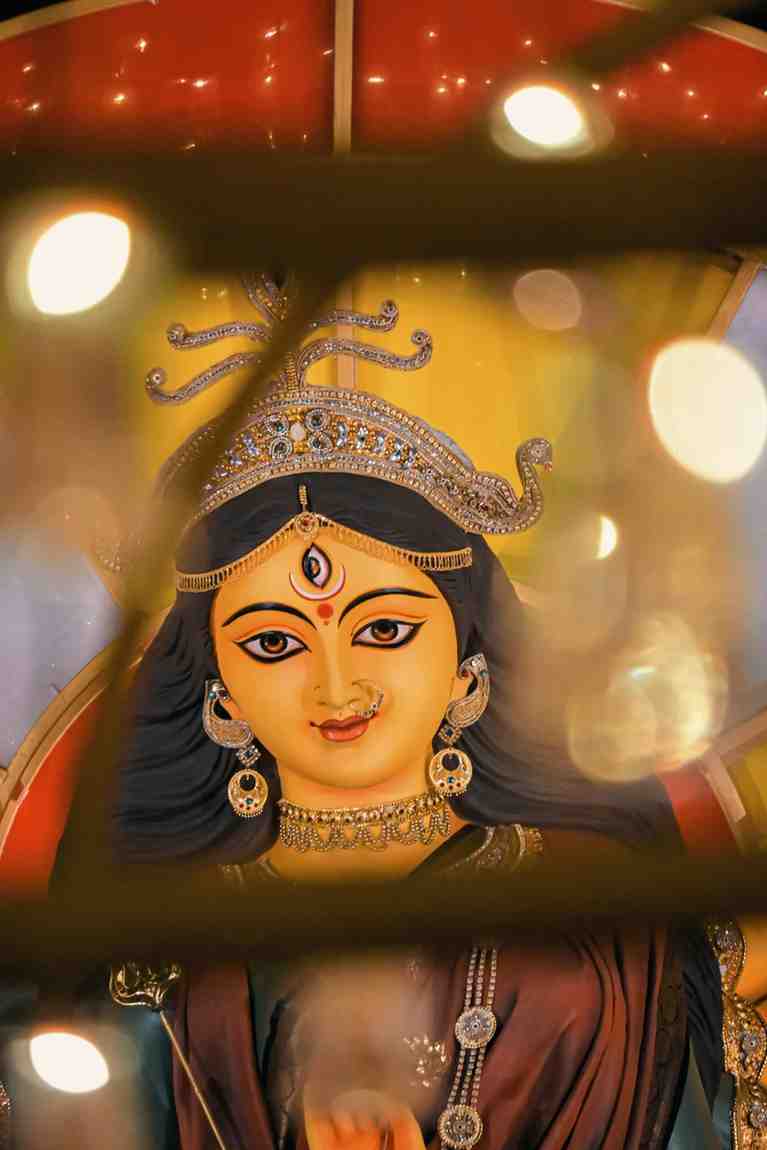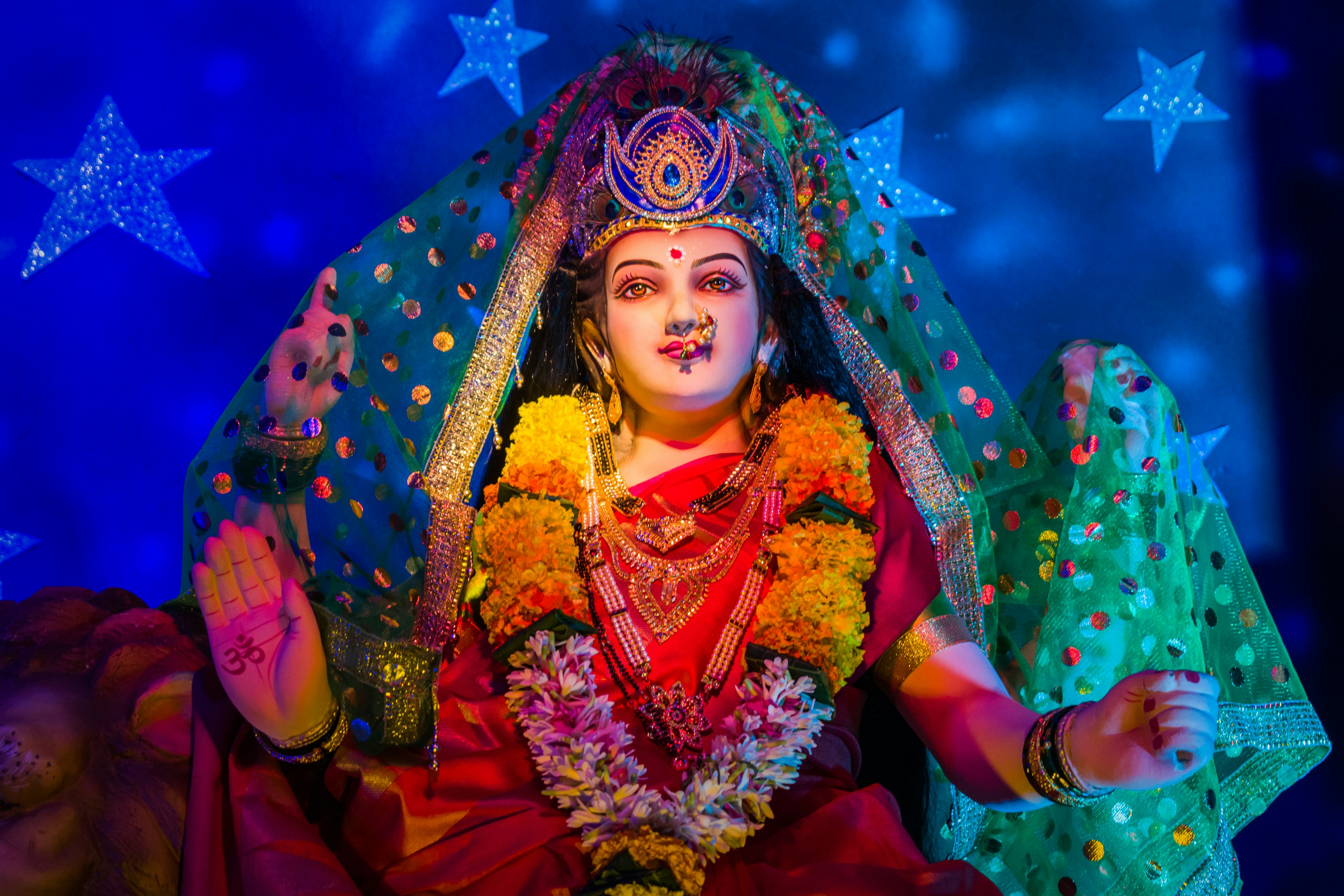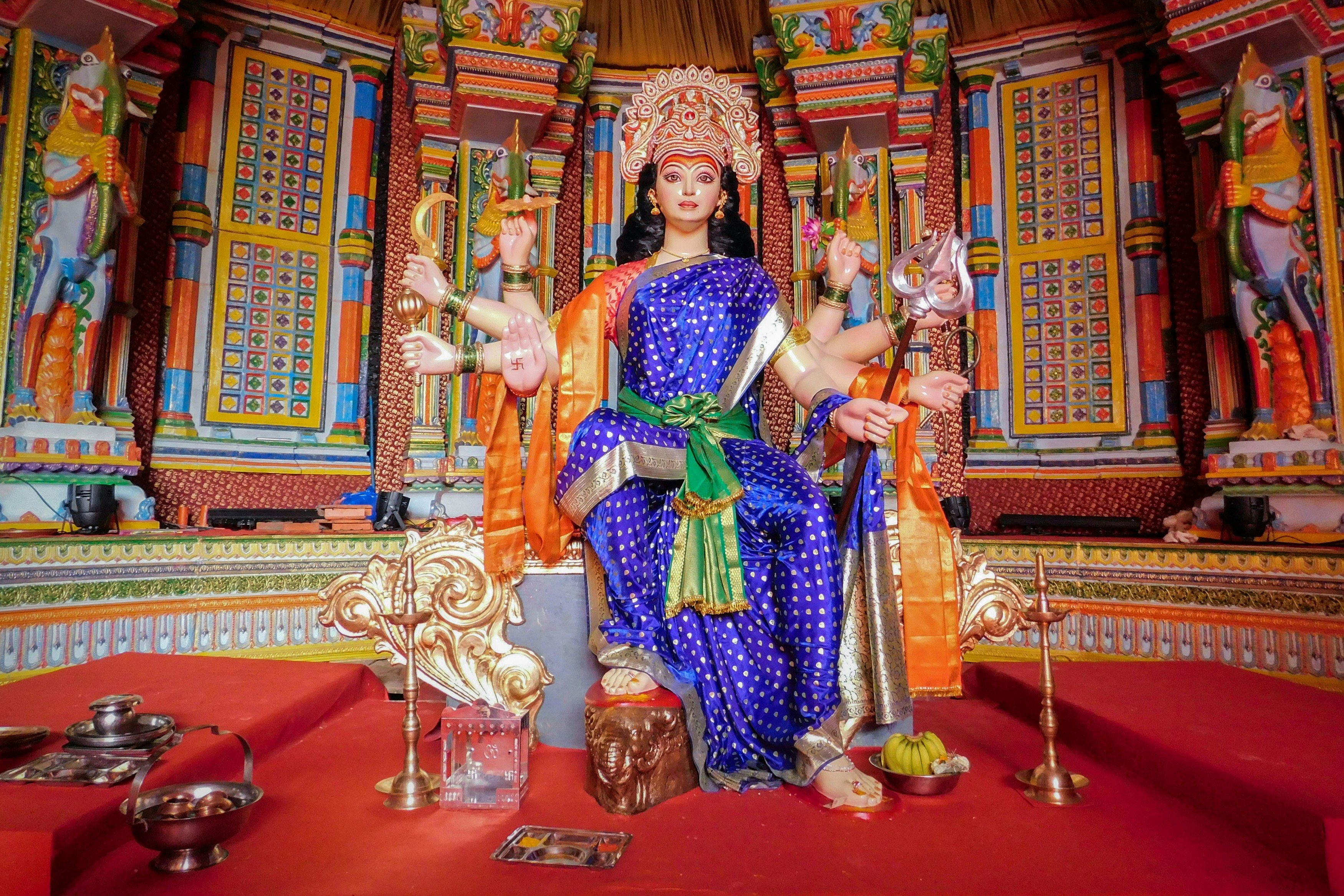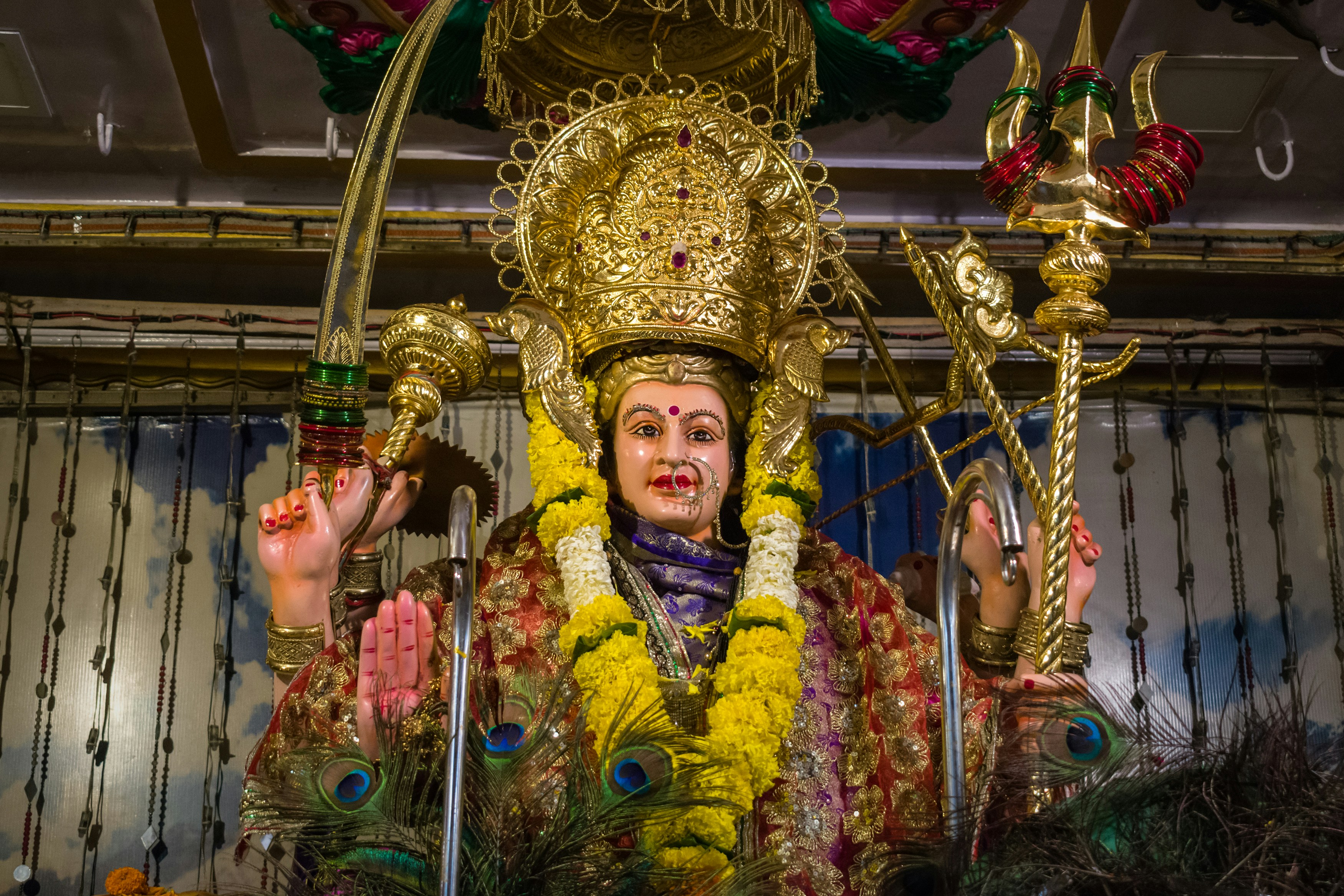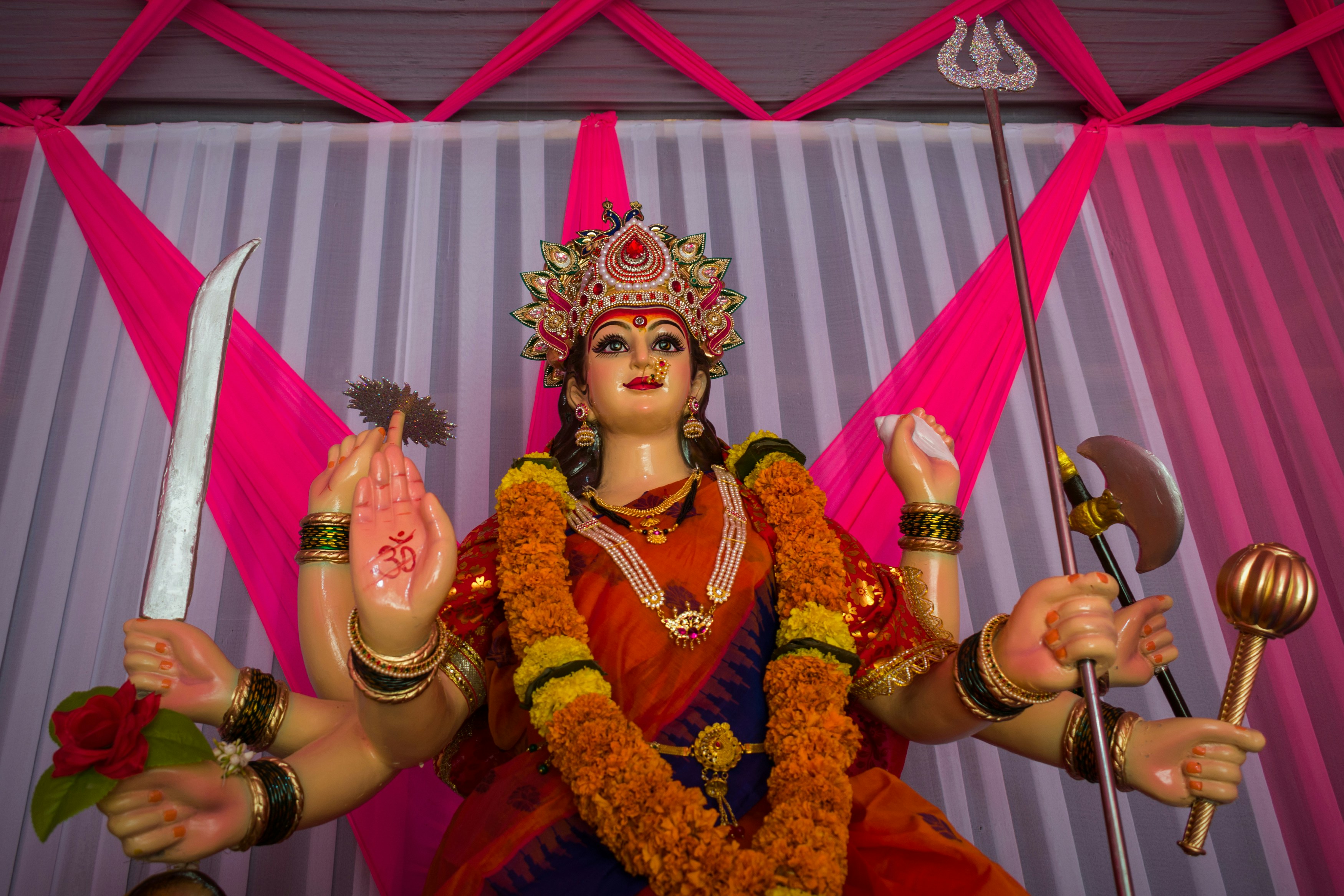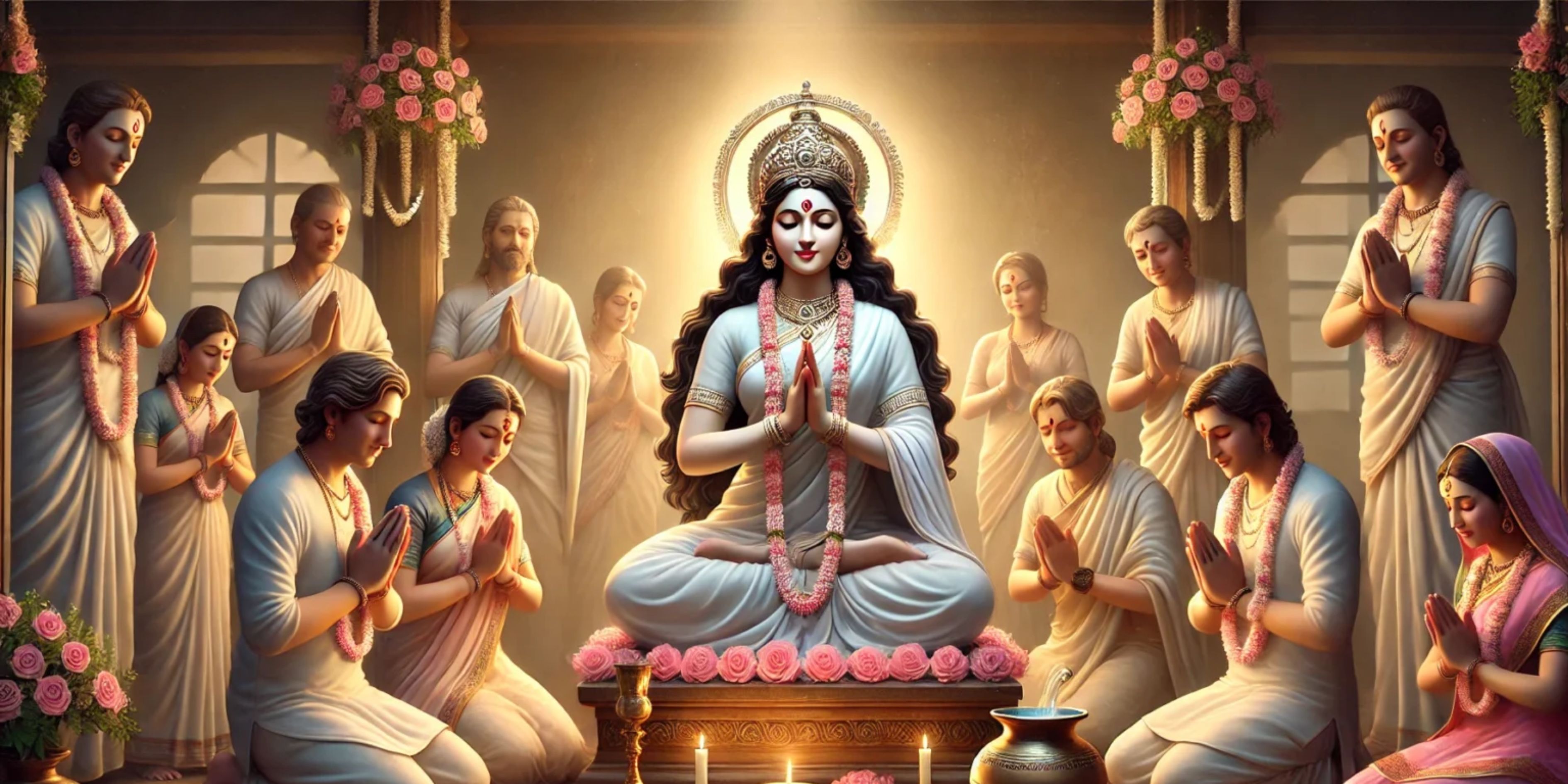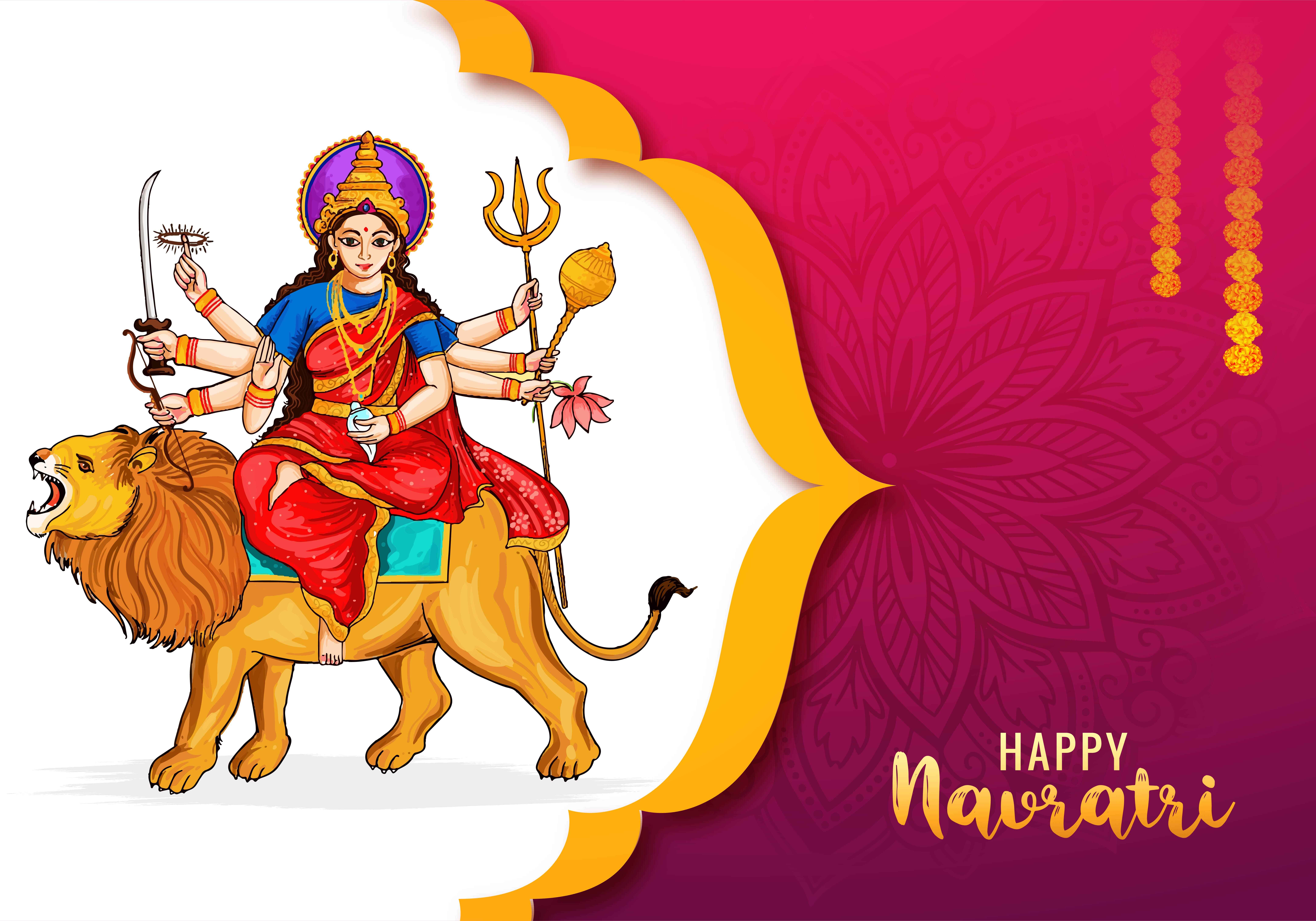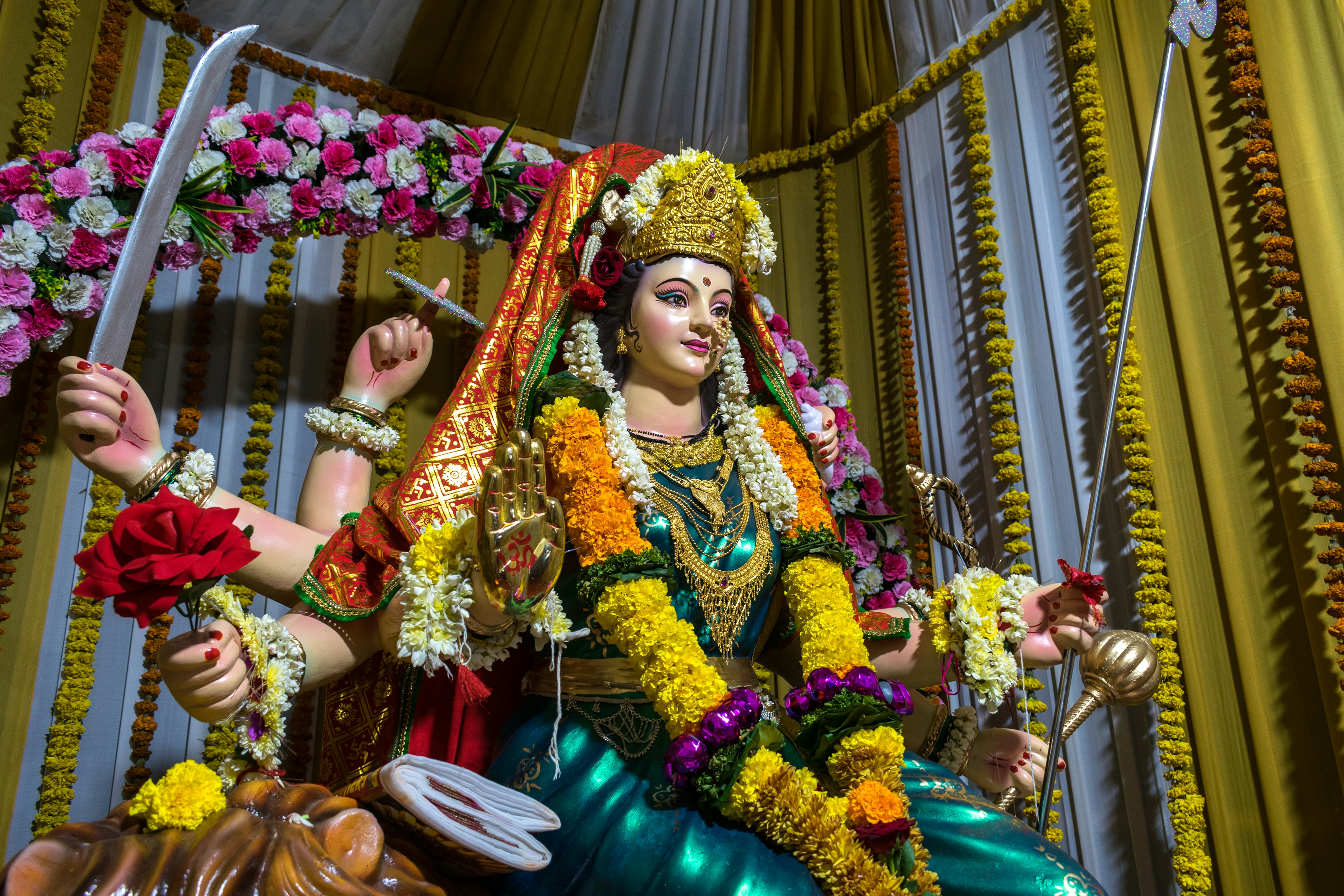Introduction | परिचय
By the eighth day, Navratri feels almost complete. The barley shoots from the Kalash have grown tall, leaning over like tired guardians of the altar. The अखंड दीपक still burns, its steady flame a reminder that devotion doesn’t waver, even when days stretch long.
In homes, the morning feels gentler. White sweets are made in the kitchen coconut ladoos, kheer bubbling on the stove. A pile of jasmine flowers rests on a brass thali, their fragrance filling the room. Children run around in fresh clothes, mostly white, while elders remind them: “आज महागौरी की पूजा है। शांति से बैठो।”
On 28 September 2025, the eighth day, or Ashtami (अष्टमी), devotees worship Maa Mahagauri (माँ महागौरी). She is the goddess of purity, serenity, and forgiveness. Her presence feels like cool water after fire, like quiet after a storm.
Who is Maa Mahagauri? | माँ महागौरी कौन हैं?
Her name tells her essence. Maha, great, Gauri, fair, bright, pure. She is known for her radiant white form, her peaceful aura.
She rides a bull (वृषभ). She is dressed in white, her skin glowing like the moon. Four arms, one holds a trident, another a damaru, while the other two bless and protect.
Her story says that after long tapasya, her body had turned dark with dust. When Lord Shiva bathed her in the waters of the Ganga, she emerged glowing, fair, and serene. From that moment, she was called Mahagauri.
For devotees, she is the form of simplicity and peace. The mother who forgives, who purifies.
Muhurat and Puja Timings | मुहूर्त और पूजा का समय
The day begins early. A holy bath, fresh clothes, and the puja space cleaned with care. White flowers and white sweets are placed on thalis.
- Ashtami Tithi (अष्टमी तिथि): 28 September 2025
- Morning Muhurat: Sunrise till mid-morning
- Abhijit Muhurat (अभिजीत मुहूर्त): 11:51 AM to 12:39 PM
The conch is blown, but the sound today feels softer. The bells ring, but slower, calmer. The chanting carries peace instead of fire.
Colour of the Day | दिन का रंग
The colour for Day 8 is white (सफेद).
Homes glow with white sarees, kurtas, and dupattas. Children wear fresh white clothes, sometimes with pink borders. The altar is covered with white cloth, jasmine, and champa flowers spread across.
Even the prasad is white, kheer, coconut ladoos, milk sweets. Everything around reflects her calm, pure energy.
Puja Vidhi and Samagri | पूजा विधि और सामग्री
- Samagri (सामग्री)
- Idol or picture of Maa Mahagauri
- White flowers (जैस्मीन, चंपा)
- White sweets, kheer, coconut ladoos
- Fruits, incense, and a diya with ghee
- Sandalwood paste (चंदन), Kalash with barley sprouts
- White cloth for the altar
Vidhi (विधि)
The idol is placed on a white cloth. A diya is lit, ghee filling the room with its fragrance. White flowers are offered, sweets placed as bhog.
During aarti, the bells ring gently. Children sit still this time, watching the flame circle slowly. The sound of mantras feels like a lullaby, soothing, calm.
Mantra and Prayer | मंत्र और प्रार्थना
मंत्र (Mantra):
ॐ देवी महागौर्यै नमः ॥
Om Devi Mahagauryai Namah
स्तोत्र (Stotra):
श्वेते वृषेसमारूढा श्वेताम्बरधरा शुचिः।
महागौरी शुभं दद्यान्महादेव प्रमोददा॥
Durga Saptashati:
या देवी सर्वभूतेषु माँ महागौरी रूपेण संस्थिता।
नमस्तस्यै नमस्तस्यै नमस्तस्यै नमो नमः॥
Chanting these feels like a prayer of forgiveness. Not loud, not fiery, just gentle, like a stream flowing quietly.
Significance of Worship | पूजा का महत्व
Maa Mahagauri is worshipped as the goddess of purity, forgiveness, and inner peace. Her blessings are believed to bring:
- शुद्धि (purification of heart and mind)
- क्षमा (forgiveness) and peace in relationships
- शांति (calmness) in the home
- सुख-समृद्धि (happiness and prosperity)
Devotees say she washes away sins and removes suffering, leaving behind only calm and light.
Story of Maa Mahagauri | माँ महागौरी की कथा
The legend says that Parvati performed severe tapasya to win Shiva as her husband. Dust and dirt darkened her skin. Pleased with her devotion, Shiva bathed her in the Ganga, and she emerged fair, glowing, divine. From then on, she was called Mahagauri.
Elders tell this story on Ashtami, ending with the lesson that true devotion purifies, no matter how long or difficult the path.
Cultural Reflections | सांस्कृतिक महत्व
Day 8 feels softer than the fiery nights before. White clothes shimmer in temples, and jasmine fragrance floats in the air. Women carry thalis of sweets to share after puja.
In Gujarat, Garba dancers wear white skirts with silver embroidery, twirling under soft lights. In Bengal, Ashtami is one of the most crowded days in pandals, the dhak still beats, but prayers are gentler. In small towns, families sit together after aarti, sharing kheer, telling the story of Mahagauri with quiet voices.
The day feels like a pause, calm, peaceful, like sitting in the lap of a forgiving mother.
Conclusion | निष्कर्ष
The eighth day of Navratri belongs to Maa Mahagauri, the goddess of purity, forgiveness, and calm. She rides a bull, dressed in white, her aura peaceful and bright.
By wearing white, offering jasmine and milk sweets, chanting her mantras, and remembering her story, devotees seek her blessings of peace and serenity.
As the diya burns late into the night, the air scented with flowers and ghee, the day leaves behind one truth: purity and forgiveness are the greatest strengths.
जय माँ महागौरी!

